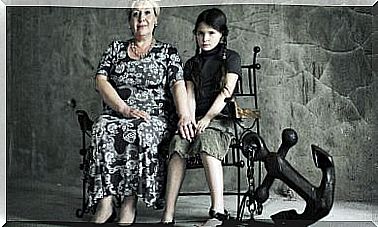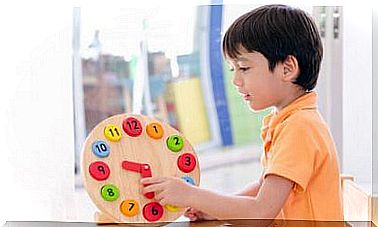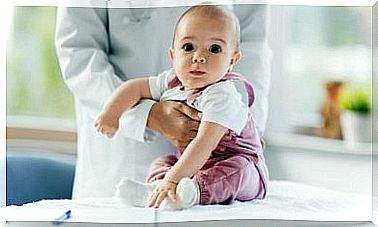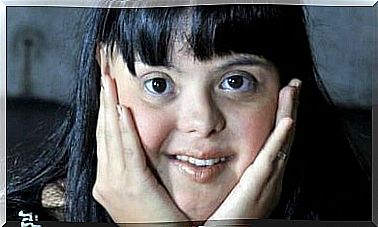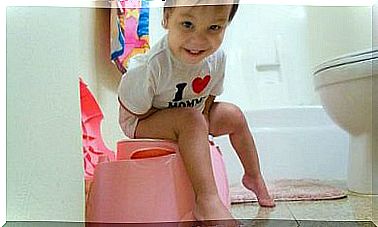The Stages Of Imagination In Children

Some children are true creative machines and they often surprise us with their silly things. At this age, the imagination emerges like no other and they have no problem expressing it. What are the stages of imagination in children? We describe them below.
Children are in the middle of a process of constant knowledge of the world. To these ideas that they absorb little by little from their experiences and from the environment that surrounds them, they add what they themselves create. Many times it is about unreal things, places or events that only exist in their heads.
Imagination is the hallmark of children and often marks the way in which their thinking is shaped. Besides being a means of expression, it is also an excellent way to develop abstract thinking; It may seem very common to us, but at that age it is not yet fully perfected.
On the other hand, it also contributes to the child’s psychic well-being. All the ways you can to put your mind to work will promote your maturation and the apprehension of new cognitive skills.
The different stages of imagination in children
1 to 3 years old
The brain of babies is not yet fully aware of its capabilities, nor is it aware of the real or imaginary. However, what stands out here is the ability to imitate – whatever they see they will want to do.
Most of the actions are motor or sensory. For example, if they see a dog barking or a bird sing, they will surely try to imitate them.
Beyond the fact that we cannot know what a baby thinks, in this stage connections are established that will last for life. So, involving him in creative processes such as listening to music, singing or speaking will encourage his development of imagination.

From 3 to 6 years
In the second of the stages of imagination in children, they begin to bring inanimate objects to life. This is how dolls, toy cars and plastic animals become the main attractions at this age.
Later, in a second instance, the child gives these objects human characteristics. In this way, they go from being independent ‘people’ to constituting a family, a school group or the population of a city. In other words, the little ones reflect in them what they see around them.
From 6 to 10 years
Here abstraction comes into play. Unlike the previous stages of imagination in children, in this one it is not necessary to have an object in front of them to invent situations or relationships with others. It can be built from scratch.
Thus, for example, they can create groups to play storytelling or participate in fantasy adventures without leaving the backyard.
Benefits of Imagination Development in Children
As we mentioned earlier, effectively going through the different stages of imagination in children will allow them to develop their intellect in an adequate way. Specifically, this progress will be noticed in the following skills:
- Communication: children with greater imagination find more expressions and these are more precise. It may not be noticeable in your early years for logical learning reasons, but over time your vocabulary and eloquence will increase.
- Problem solving: Imagination gives children the ability to think from another perspective. In this way, their way of dealing with conflicts or enigmas changes completely.
- They develop social skills: Many of the games that encourage the development of the imagination are group games, so they are very good at creating bonds with other people.
- Prepares them for the future: inventing stories and situations helps children to place themselves in a place that they could occupy in the future. Thus, they will experience what it feels like to be in charge of a class, to be a doctor or even to be parents.
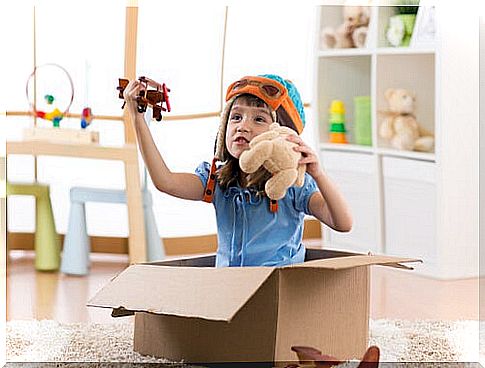
Ultimately, it is worth clarifying that what is detailed in this article does not apply to each and every child. The human mind is extremely complex and this makes it unpredictable many times.
Therefore, if a child does not meet some of these parameters it should not be a concern for the parents. It is a matter of monitoring and paying attention to the child’s behavior and its rate of development and maturation.
Finally, it is also positive that you take time to share with them and, why not, let your child’s imagination go outside. In addition to strengthening their bond, you will be helping them to enhance this wonderful capacity of the human brain.

